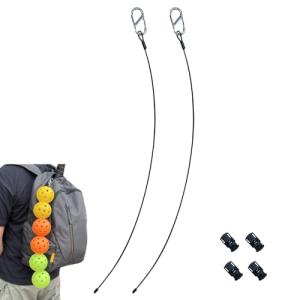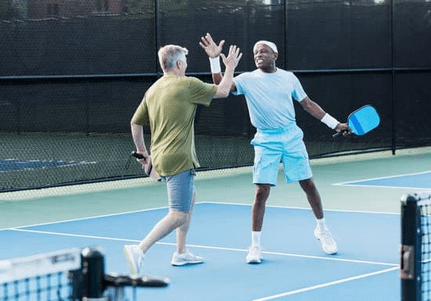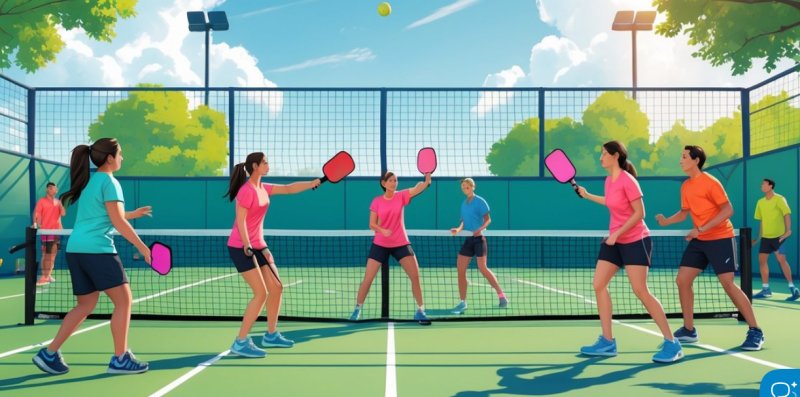Knowing the official pickleball rules is key to a better game. Pickleball is a combination of tennis, badminton, and table tennis. It's loved by many around the world.
To play well, learn about pickleball regulations, including serving, scoring, and non-volley zones. The rules ensure that everyone has fun and plays fairly.
The official pickleball rules are on the USA Pickleball website at usapickleball.org. It's important to follow these to get better and enjoy the game more.

Key Takeaways
- Understanding official pickleball rules enhances the gaming experience.
- Pickleball regulations include serving, scoring, and non-volley zones.
- The official rules can be found on the USA Pickleball website.
- Following the rules is crucial for a fun and fair game.
- Familiarizing yourself with pickleball game rules improves player skills.
Understanding the Basics of Pickleball
Pickleball is a racquet sport that blends badminton, tennis, and table tennis. It's played on a court with a low net. Knowing the game's history, evolution, and equipment is key to enjoying it.
The History and Evolution of Pickleball Rules
Pickleball was started in the mid-1960s as a backyard game by Joel Pritchard and his friends. Over time, it has grown into a sport with official rules.
From Backyard Game to Standardized Sport
The game became more structured with the USA Pickleball Association (USAPA). They helped standardize the pickleball rules. This made the game more organized and accessible to more people.
Key Milestones in Rule Development
Important milestones include the first official rulebook and pickleball equipment standards. These steps have shaped the game into what we know today.
Equipment Requirements: Paddles, Balls, and Attire
The pickleball equipment is crucial. This includes paddles, balls, and the right clothes.
Official Paddle Specifications
The USAPA has set official paddle specifications. Paddles must be made of non-compressible materials and have a smooth surface.
Ball Types and Standards
Pickleball balls are plastic with holes to reduce wind. The USAPA sets the size, weight, and hole pattern for official balls.
Recommended Player Gear
While pickleball attire isn't strictly regulated, players should wear comfy, athletic clothes. Good footwear is also important for performance and safety.
Pickleball Court Dimensions and Setup
Knowing the dimensions and setup of a pickleball court is key for any player. The court's layout is made to be fun and challenging for all players.
Standard Court Measurements and Markings
A standard pickleball court is 20x44 feet for singles and doubles. Its size and markings make it easy to understand and play.
Court Size and Boundary Lines
The court's boundary lines are vital. They define the playing area and decide if a shot is in or out. If the ball lands on a line, it's considered in play.
Centerline and Service Areas
The centerline splits the court into two serving areas, right and left. Players must serve into the diagonally opposite area. The service areas are key for valid serves and gameplay.
The Non-Volley Zone (Kitchen) Explained
The non-volley zone, or "kitchen," is on both sides of the net. It extends 7 feet from the net to the sidelines. Players can't make volleys here.
"The non-volley zone is a critical area of the court that requires strategy and skill to navigate effectively."
Indoor vs. Outdoor Court Differences
Indoor and outdoor pickleball courts have the same dimensions. But, the surface and lighting can differ. Outdoor courts may have different surfaces and weather conditions.
| Court Feature | Indoor Court | Outdoor Court |
|---|---|---|
| Surface Material | Typically wooden or synthetic | Often acrylic or asphalt |
| Lighting | Artificial lighting | Natural sunlight, may have additional lighting |
Starting the Game: Serve Rules and Regulations
Knowing the serve rules in pickleball is key for any player. The serve is a critical part that can greatly affect the game's outcome.
Proper Serving Technique and Requirements
A good serve in pickleball means using an underhand motion. The USA Pickleball Association (USAPA) says the server's arm should move up when hitting the ball. This is essential for a valid serve.
Underhand Serve Rules
The underhand serve is a key part of pickleball. Players must hit the ball below their waist. The serve must be done with an underhand motion.
Service Motion and Contact Point
The service motion should be smooth and controlled. The contact point is key; it must be below the waist and not above the navel.
Service Court Positioning and Rotation
Players must serve into the diagonally opposite service court. In doubles, the server and their partner must stand correctly. The server stands behind the right service court for the first serve.
Common Serving Violations to Avoid
Foot faults and illegal service motions are common mistakes. A foot fault happens when the server's foot touches the baseline or the court before hitting the ball.
Foot Faults During Service
To avoid foot faults, servers must watch their foot positioning. Any contact with the line or the court before serving is a fault.
Illegal Service Motions
An illegal service motion includes serving overhand or hitting the ball above the waist. Such actions are faults.
By mastering the serve and knowing its rules, players can improve their pickleball game. As "the serve is a crucial shot that can make or break a game", it's important to practice and perfect it.
The Official Rules of Pickleball: What Every Player Should Know
The USA Pickleball Association (USAPA) and the International Federation of Pickleball (IFP) set the rules for pickleball. They make sure the game is fair and consistent everywhere. This helps players know what to expect in tournaments.
USA Pickleball Association (USAPA) Official Guidelines
The USAPA leads pickleball in the United States. They have rules for court size, equipment, and how players should act. For example, a court is 20x44 feet for singles and doubles.
They also have rules for serving, scoring, and where players can't volley the ball.
International Federation of Pickleball (IFP) Standards
The IFP aims to make pickleball rules the same worldwide. Their rules are similar to the USAPA's but have extra rules for international games. They also help grow pickleball globally.
Recent Rule Changes and Updates for 2023
Pickleball rules change from time to time. For 2023, there are important updates:
New Service Rules
- Serving must be done with an underhand motion, with the paddle below the waist.
- Faking a serve is not allowed.
Equipment Regulation Updates
There are new rules for paddles and balls. Paddles can't be longer than 24 inches or wider than 8 inches.
Tournament Play Modifications
New rules for tournaments include stricter time limits and clearer dispute rules.
It's important for competitive players to know these changes. Check the USAPA and IFP websites often for updates.
Mastering the Pickleball Scoring System
To enjoy pickleball, you need to understand its scoring system. It's a key part of the game. Knowing it can make your experience better. Games are usually played to 11 points, with a two-point lead needed to win.
Understanding the 11-Point Scoring Format
The 11-point scoring format is standard in pickleball. A match is won by the first team to reach 11 points, with a two-point lead. If it's 10-10, play continues until one team is two points ahead.
Rally Scoring vs. Side-Out Scoring
Pickleball uses rally scoring. A point is scored by the team that wins a rally, no matter who served. This is different from side-out scoring, where only the serving team scores. Rally scoring makes the game faster and more exciting.
How to Keep Score in Doubles Play
In doubles, keeping score is important. The score is announced before each serve. The server must say the score, including their team's points, the opponent's points, and the server number.
Announcing the Score Correctly
It's key to announce the score right. The server says their team's score first, then the opponent's, and their server number. For example, "5-3-1" means the serving team has 5 points, the opponents have 3, and it's the first server.
Server Position and Number Tracking
In doubles, each team has two servers, numbered 1 and 2. The first server serves from the right court. Knowing the server number is important to avoid mistakes.
Win by Two Rule and Tiebreakers
The win by two rule means a team must be two points ahead to win. If it's tied at 10-10, play continues until one team is two points ahead. This rule adds challenge and excitement.
Non-Volley Zone Rules and Violations

The non-volley zone, also known as the "kitchen," has its own set of rules. It's important for players to know these rules to avoid faults and play smoothly.
Kitchen Line Restrictions During Play
One key rule is about volleys in the kitchen. It's a fault if a player steps on the non-volley zone, including the line, while volleying a ball. This rule stops players from getting an unfair advantage by volleying in the kitchen.
Volley Prohibitions in the Kitchen
Players can't make volleys in the non-volley zone. Any ball hit in the air without bouncing must be hit outside this area. Breaking this rule results in a fault.
Legal Kitchen Plays
Even though volleys are banned in the kitchen, players can hit balls that have bounced there. This lets players use the kitchen for strategic groundstrokes.
Momentum Carries and Foot Faults
Momentum carries happen when a player's momentum from a shot takes them into the non-volley zone. It's key to watch your body positioning after hitting a shot to avoid faults. Foot faults occur when a player's foot enters the non-volley zone during a volley. Both can lead to a fault being called.
Detecting and Avoiding Kitchen Violations
To avoid kitchen violations, players need to be careful with their footwork and body positioning. Being aware of your surroundings on the court can help avoid faults.
Partner Violations in Doubles Play
In doubles, both partners can be called for non-volley zone violations. It's important for partners to communicate well and know each other's positions on the court.
Here's a summary of key non-volley zone rules and violations in a tabular format:
| Rule/Violation | Description | Penalty |
|---|---|---|
| Volley in Non-Volley Zone | Hitting a volley in the kitchen | Fault |
| Foot Fault | Entering the non-volley zone with foot during volley | Fault |
| Momentum Carry | Momentum from a shot carries player into non-volley zone | Fault |
Pickleball Player Etiquette and Code of Conduct
Maintaining a positive and respectful attitude is key in pickleball, a sport known for its friendly vibe. We represent ourselves and the sport as a whole, so it's important to follow the pickleball etiquette and code of conduct.
Sportsmanship on the Court
Good sportsmanship is the heart of pickleball. It means respecting our opponents, partners, and officials. We should be gracious in wins and losses. A simple handshake or word can make a big difference in building a positive community.
"The game is not just about winning or losing; it's about the joy of playing and the camaraderie with fellow players." - A pickleball enthusiast
Communication with Partners and Opponents
Clear communication makes the game smooth and fun. We should call out scores, signal our plans, and ask for help when needed. This avoids confusion and makes the game better for everyone.
| Communication Tip | Description |
|---|---|
| Calling Out Scores | Clearly announce the score before each serve. |
| Signaling Intentions | Use hand signals or verbal cues to indicate your actions. |
| Asking for Clarifications | Politely ask for rule clarifications or score confirmations. |
Handling Disputes and Disagreements
Disputes can happen, but we should handle them with grace. It is important to know when to concede points and how to resolve conflicts.
When to Concede Points
If we make a mistake, we should graciously concede the point. This shows respect for the game and our opponents.
Respectful Conflict Resolution
When conflicts arise, stay calm and discuss them respectfully. It is crucial to find a fair solution that everyone agrees on.
Doubles Pickleball Rules and Strategies

Teamwork is crucial in doubles pickleball. Players also need to know the rules and strategies well to outsmart their opponents.
Partner Positioning and Communication
Knowing each player's strengths is important. Good communication is key to working together smoothly.
The player at the non-volley zone (NVZ) line can block shots. Their partner covers the backcourt. Clear communication is essential for good teamwork.
Rotation and Side Switching Procedures
Players switch sides after scoring in doubles. This rule makes the game fair by reducing the effect of court conditions.
Knowing how to switch sides is important. It helps keep the serving order right and positions on the court correct.
Differences Between Doubles and Singles Rules
Doubles and singles have different rules. Serving is one big difference.
Serving Sequence in Doubles vs. Singles
In doubles, both players serve. In singles, only one player serves.
Court Coverage Responsibilities
In doubles, players cover the court together. Each player looks after their area.
| Rule | Doubles | Singles |
|---|---|---|
| Serving Sequence | Both players serve | One player serves |
| Court Coverage | Shared responsibility | Solo responsibility |
The USA Pickleball Association says teamwork is key in doubles. Learning the rules and strategies can improve your game. It makes playing more enjoyable.
Tournament Play and Referee Guidelines
Competing in a pickleball tournament is thrilling. But, players need to know the official rules and referee guidelines to succeed. Knowing the tournament rules makes the game more enjoyable for everyone.
Official Tournament Formats and Brackets
Pickleball tournaments come in different formats like round-robin and single-elimination brackets. The USA Pickleball Association (USAPA) sets guidelines for fairness. It's key for players to understand these formats to plan their strategy.
Referee Responsibilities and Authority
Referees are crucial in keeping tournaments fair and running smoothly. They make calls, enforce rules, and manage the game. Players should respect referees' decisions to keep the game respectful.
Line Call Challenges
Players can challenge line calls made by referees. This involves a formal protest reviewed by the referee. Knowing how to challenge line calls helps manage disputes.
Technical Fouls and Warnings
Referees can issue technical fouls and warnings for rule breaks or bad sportsmanship. To avoid trouble, players should know what actions can lead to penalties.
Time-Outs, Injuries, and Special Circumstances
Timeouts, injuries, and other issues can interrupt tournaments. Players and referees must follow the rules in these situations.
| Situation | Procedure |
|---|---|
| Medical Time-Outs | Players can request a medical time-out for injuries. The referee decides if it's allowed. |
| Equipment Failures | If equipment fails, players can ask for a time-out to fix it. The referee supervises. |
| Weather Delays | Organizers and referees decide what to do during weather delays. This might include postponing or moving indoors. |
Knowing these guidelines will help players handle tournament play better. They'll also appreciate the role of referees in making the game fair and fun.
Conclusion: Embracing the Spirit of the Game
As we wrap up our look at pickleball rules, it's key to remember the game's true essence. It's all about etiquette and sportsmanship. Pickleball values friendship and respect among players.
By knowing and following the rules we've discussed, we can improve our pickleball play. This means being kind to our opponents, talking well with our partners, and staying positive on the court.
Being true to the pickleball spirit means being aware of how we act and its effect on others. It's about loving the game, learning from our errors, and showing sportsmanship in every game. As we keep playing and enjoying this sport, let's always uphold its special values.
FAQ
Q: What are the official rules of pickleball?
Q: What are the standard dimensions of a pickleball court?
Q: What is the non-volley zone (NVZ) in pickleball?
Q: How do you serve in pickleball?
Q: What is the scoring system in pickleball?
Q: What are the rules for doubles pickleball?
Q: How do you handle disputes and disagreements in pickleball?
Q: What is the role of a referee in pickleball tournament play?
Q: Can you explain the differences between indoor and outdoor pickleball courts?
Q: What are the guidelines for player etiquette in pickleball?
Q: What are the recent rule changes and updates in pickleball for 2023?
Q: How do you keep score in doubles pickleball?
DISCLAIMER
The information contained on Pickle Pro Zone website and our related pages is provided for entertainment and informational purposes only. It is not intended as a substitute for the advice of or treatment that may be prescribed by your physician or other health care provider.
Understand that you are solely responsible for the way this information is perceived and utilized, and do so at your own risk. In no way will Pickle Pro Zone be responsible for injuries or other problems that might occur due to the use of this website or any actions taken based on the content of this website. Pickle Pro Zone will not be held responsible for the conduct of any companies and websites recommended within this site.





